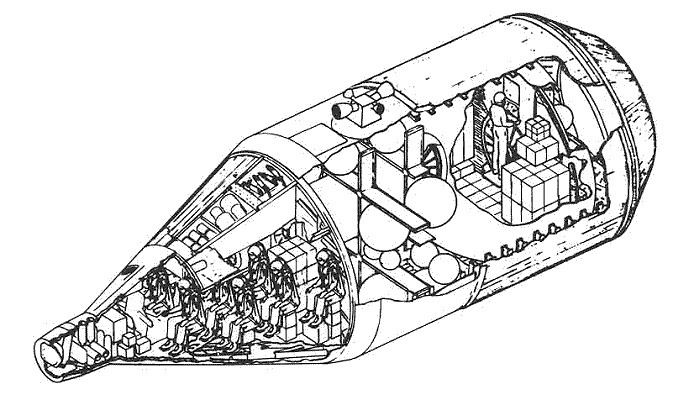Crew 9 to 12 Diameter 4.27 m | Height 11.5 m Volume 18.7 m³ | |
 | ||
Role Total 15,590 kilograms (34,370 lb) | ||
Big Gemini (or "Big G") was proposed to NASA by McDonnell Douglas in August 1969 as an advanced version of the Gemini spacecraft system. It was intended to provide large-capacity, all-purpose access to space, including missions that ultimately used Apollo or the Space Shuttle.
The study was performed to generate a preliminary definition of a logistic spacecraft derived from Gemini that would be used to resupply an orbiting space station. Land-landing at a preselected site and refurbishment and reuse were design requirements. Two baseline spacecraft were defined: a nine-man minimum modification version of the Gemini B called Min-Mod Big G and a 12-man advanced concept, having the same exterior geometry but with new, state-of-the-art subsystems, called Advanced Big G. Three launch vehicles-Saturn IB, Titan IIIM, and Saturn INT-20 (S-IC/S-IVB) were investigated for use with the spacecraft. The Saturn IB was discarded late in the study.
The spacecraft consisted of a crew module designed by extending the Gemini B exterior cone to a 419-cm-diameter heat shield and a cargo propulsion module. Recovery of the crew module would be effected by means of a gliding parachute (parawing). The parametric analysis and point design of the parawing were accomplished by Northrop- Ventura Company under a subcontract, and the contents of their final report were incorporated into the document. The landing attenuation of the spacecraft would be accomplished by a skid landing gear extended from the bottom of the crew module, allowing the crew to land in an upright position. The propulsion functions of transfer, rendezvous, attitude control, and retrograde would be performed by a single liquid propellant system, and launch escape would be provided by a large Apollo-type launch escape system.
In addition to the design analysis, operational support analysis and a program development plan were prepared.
